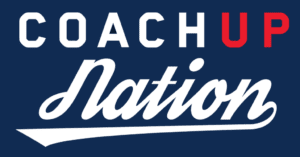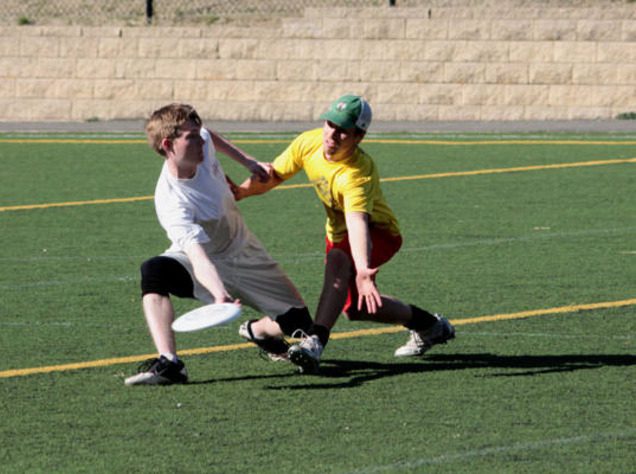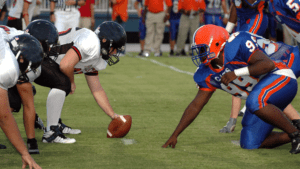In order to be an elite Ultimate player, you must have a firm grasp on many general sports traits — running, jumping, catching, blocking, and throwing included. Of these aspects, throwing is, by far, the one that takes the most practice. While kicking a soccer ball or throwing a baseball comes naturally, many of the popular techniques in Ultimate are extremely awkward and uncomfortable at the start. It involves proper technique, strength, and buckets of your spare time.
However, fear not! CoachUp is here to give you some basic rules of thumb while mastering the five most popular throws. Keep in mind that all of these throws are done with you dominant hand. Obviously, some are used rather infrequently and only in dire or special occasions, but it never hurts to show off with them before practice!

Backhand
Prevalence: Very Common.
Grip: Your thumb should be on top of the Frisbee with the pointer finger wrapped around the edge. Then, curl the rest of your fingers under the rim of the disc.
Stance: Stand with your dominant foot forward and your body parallel to the direction you’re throwing. Your shoulders should be pointed directly at your target, and when you throw they shouldn’t move.
Throw: Curl your throwing arm towards your body and step forward with your dominant foot for power. When you throw the disc, keep your arm parallel to the ground so that it releases at a flat angle. How do you swing a baseball bat? If you swing straight up for a home run on every at-bat, you’ll strikeout constantly. The same ideal applies here, the flatter the better.
Overhead/Hammer
Prevalence: Uncommon.
Grip: Replicate the flick grip.
Stance: Replicate the flick stance.
Throw: Here’s where it gets tricky: you want to hold it like the forehand, throw it like the flick, but only over your head and across your body. It’s important to not just throw straight forward like you would a baseball. Then, it’ll just be a hard, straight disc that’ll be much harder to catch. Instead, it a habit to throw it across your body, snapping your wrist as well. The desired effect is a fast, curvy disc that will, hopefully, float down to the receiver. This throw is only used in desperate situations like high stall counts or intense, tight, man-defense opposition. It’s an incredibly risky throw, so practice it often before pulling it out during a game!

Forehand/Flick
Prevalence: Very Common.
Grip: Unlike a backhand, throwing the forehand pass, or the “flick,” is all in the wrist. First, put your thumb around the rim. Then, make a “peace sign” with your middle and index finger, placing it below the disk. Put your middle finger along the inside of the rim and your pointer finger under the disc for support.
Stance: Your stance will be slightly more fluid for this one. The pivot foot will grossly alter what your body motion and appearance will be. Sometimes your back non-throwing shoulder will be forward, sometimes you’ll be in a flat stance with both feet equal. Getting into an equal stance like they show in the above gif is crucial for in-game athletes, especially handlers. The equal footing will allow you easily to switch from the forehand and backhand without feeling backed into a corner.
Throw: Cock your wrist slightly back and forcefully flick the disc at your target. Like your backhand, the Frisbee should be parallel to the ground to keep it flying straight. Similarly, it will feel natural to overuse your arm, but try not to. Too much arm movement will lead to poorer throws and eventual turnovers. When learning, try putting the elbow of your throwing hand on your hip, don’t move it at all. Seriously, don’t move it! It will feel uncomfortable at first, but will enforce the wrist-only guidelines.

Scoober
Prevalence: Very Uncommon
Grip: The scoober is a tricky, but useful throw that is a mix of the three previous styles. You hold the disc in the same way as the hammer and forehand; place your index and middle finger around and under the rim of it and your thumb on the rim. Like the hammer, the scoober is a great way to get over the heads of defenders.
Throw: Step with your right foot and bring the disc across to your left side, while turning the disc upside down. Throw the disc by swinging from your elbow and flicking your wrist. So, it’s similar grip to the flick, but thrown like a backhand. These throws are great for short passes.
Thumber
Prevalence: Very Uncommon
Grip: Unsurprisingly, the thumber involves throwing with mainly the thumb. The thumb goes underneath and against the inside of the rim while your four other fingers are typically in a closed fist outside of the disc. Basically, only your thumb should be used with the other fingers existing as support.
Throw: The thumber is a throw used mostly with your upper body, but step just as if you were throwing a forehand flick. Think of it as if you were throwing a football, it’s similar positioning-wise. Toss the disc from the forehand side and use the thumb to push and flick the disc. Make sure to snap your wrist and elbow at the same time!
(Related: Read a beginner’s guide to Ultimate here.)
Huddle Up
While these are the five you’re most likely to run into, there are a bevy of other throws just waiting to be mastered! From the chicken wing to air bouncing, use these tips as a jumping off point. In order to be an elite, successful Ultimate player, you need to have the skills to throw in any situation.
Any good defending team will recognize a thrower’s weakness and work to force them into it. So, don’t let yourself get into uncomfortable situations and learn them all before your next game or practice. At the same time, it’s tough to read tips on foreign throws and be able to use them effectively your next time out.
Consider booking a private trainer through CoachUp to get those handles under control! Our coaches are all skilled in the art of tossing a disc, so don’t miss an opportunity to get a leg up on your competition.
Be prepared for the biggest moments by mastering the small ones off the field.
How useful was this post?
Click on a star to rate it!
Average rating 4.8 / 5. Vote count: 6
No votes so far! Be the first to rate this post.




